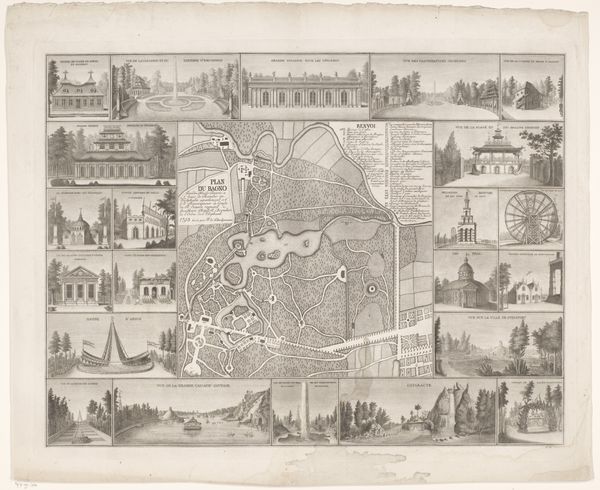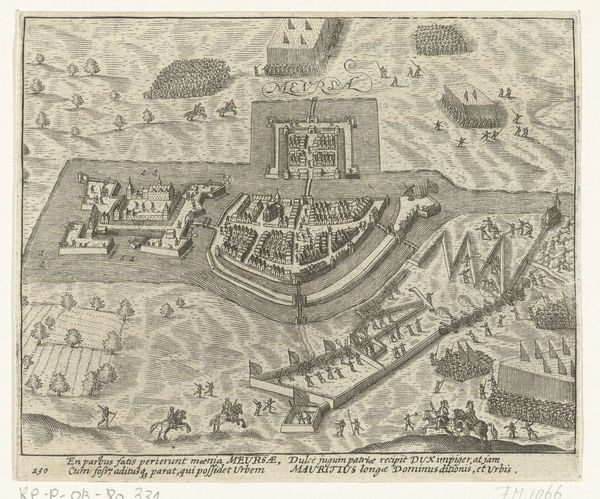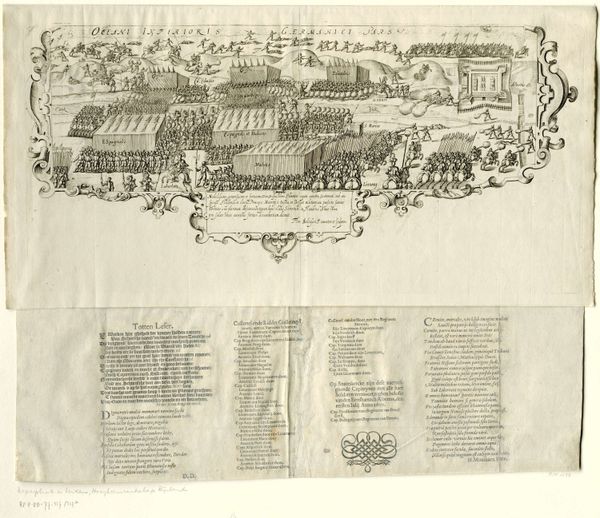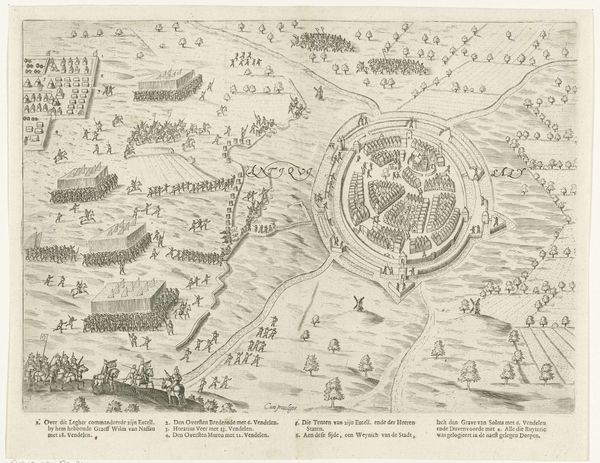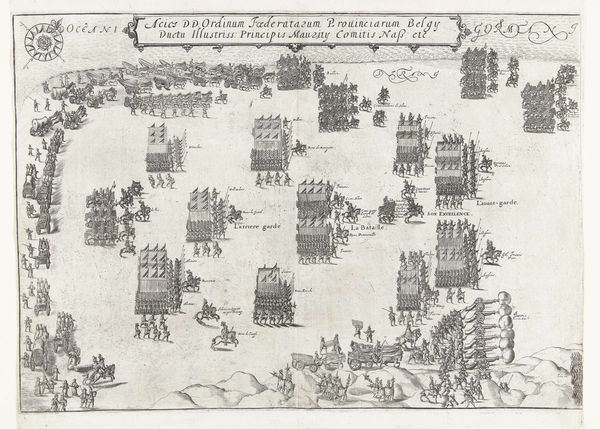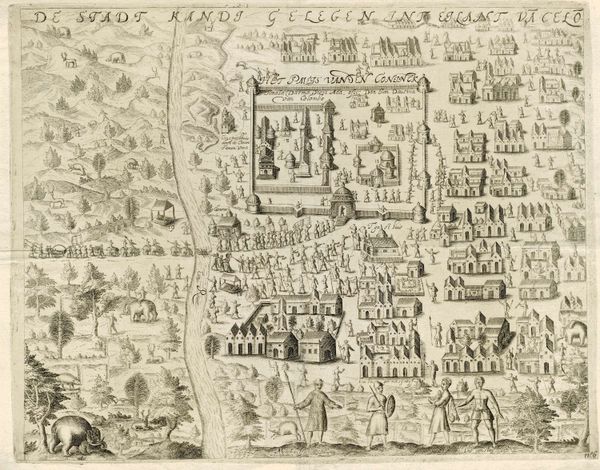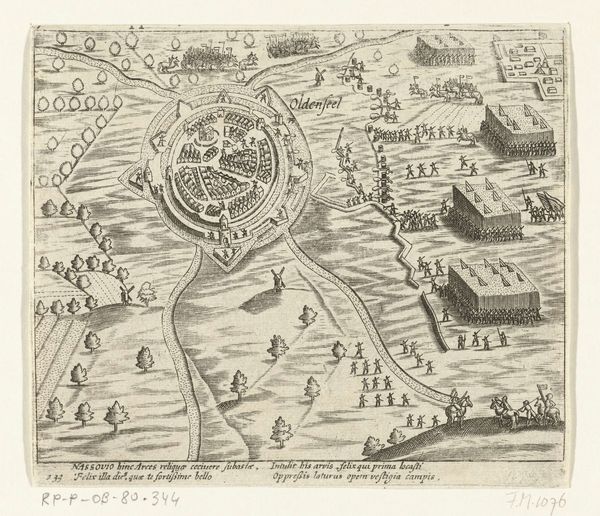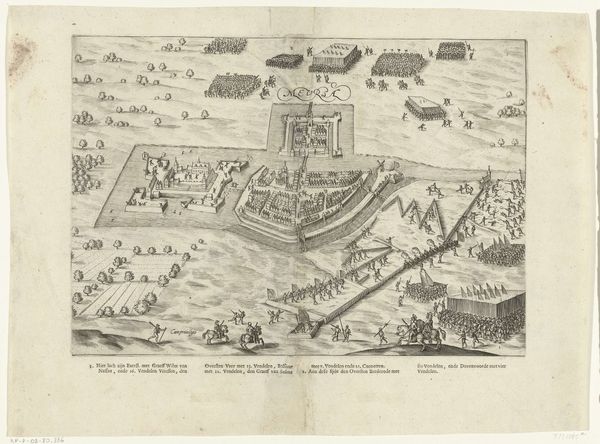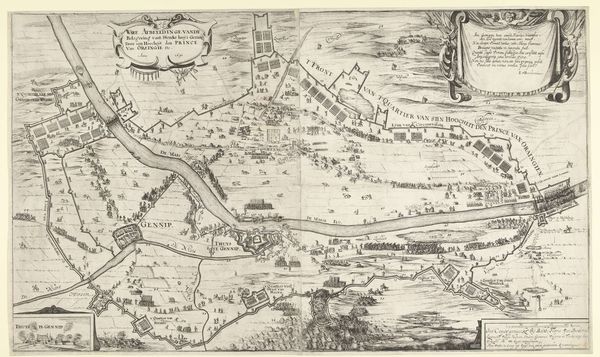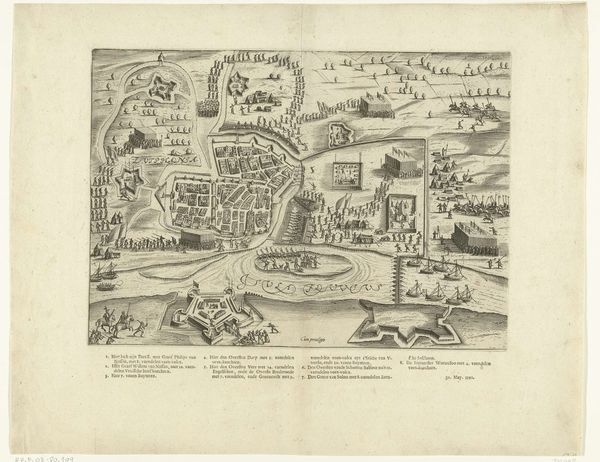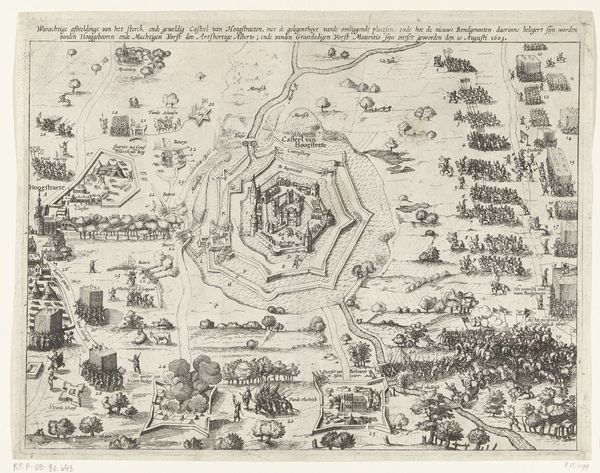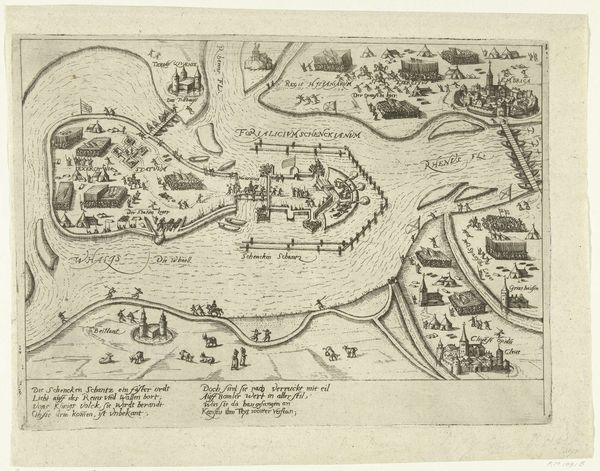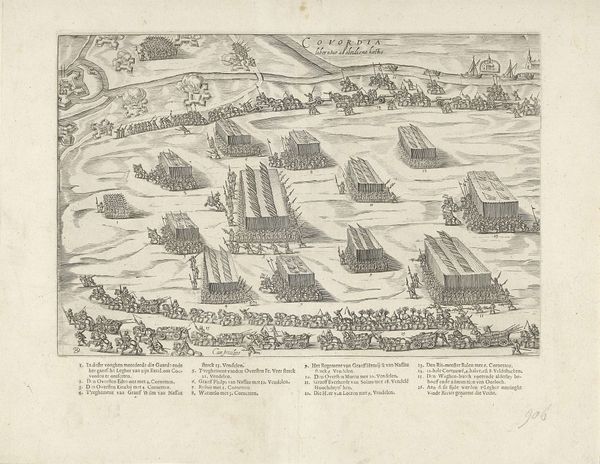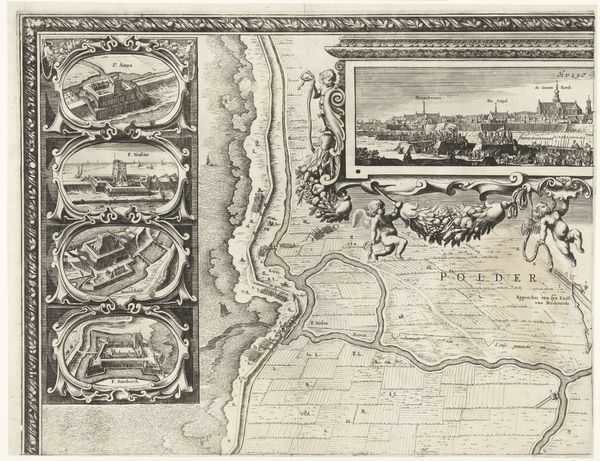
De Staatse en Spaanse legers staan tegenover elkaar op het strand bij Nieuwpoort (rechterblad), 1600 1600
0:00
0:00
print, engraving
#
baroque
# print
#
figuration
#
line
#
cityscape
#
history-painting
#
engraving
Dimensions: height 290 mm, width 406 mm
Copyright: Rijks Museum: Open Domain
Editor: Here we have Floris Balthasarsz van Berckenrode's engraving, "The States and Spanish Armies Face Each Other on the Beach Near Nieuwpoort," created in 1600. It's incredibly detailed! The sheer density of figures is amazing. What immediately stands out to you about the visual composition? Curator: Observe how Berckenrode meticulously arranges the armies into regimented blocks. This ordered pattern is not merely representational. Note the line as the essential formal element—defining the figures, structuring the space, and conveying a sense of organized power. Consider how this linearity contributes to a visual rhetoric of control and strategic precision. How does the interplay between line and space affect your perception? Editor: Well, the lines do create these distinct, almost rigid zones, making it feel like a calculated display of military might, not a chaotic battle. Is there a symbolic reason for that, or is it primarily a formal choice? Curator: A productive question! Certainly, there's a representational purpose – to depict the armies. However, from a formalist perspective, the symbolic meaning arises from the visual structure itself. The very act of imposing order through line and form communicates a desire for dominance. Notice how the texture of the water contrasts with the precise formations above. Do you see any visual relationships within the blocks of soldiers? Editor: Now that you mention it, each block does have slightly different densities and patterns of lines. It's not a completely uniform mass. Perhaps these subtle differences emphasize individual units or even evoke movement despite the static presentation. Curator: Precisely! These nuanced variations enrich the surface texture and invite closer inspection. In its totality, it is these formal relations that come to suggest meaning, that construct a certain point of view. What did you observe of line and shape in relationship with that textual label at the top of the work? Editor: Interesting... I hadn’t considered how the lines that create the border above also form the shapes of decorative leaves. Also, I’m appreciating how the engraving is balanced using textual descriptions written near the various blocks of figures. Thank you for walking me through that. Curator: My pleasure. Reflecting on this print, we see how analyzing form reveals not just artistic skill, but the very encoding of power and perspective.
Comments
No comments
Be the first to comment and join the conversation on the ultimate creative platform.
